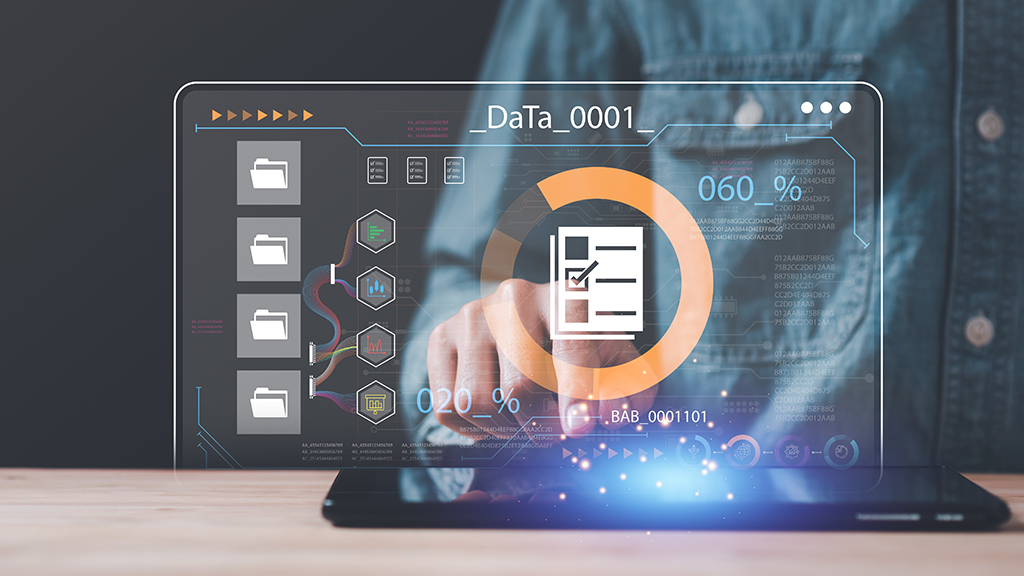
Data & AI Evangelist
Subscribe to the newsletter
Living in a data-driven world, organizations have recognized the importance of what a defined data strategy means to them. This realization has proven highly beneficial for their business, offering valuable insights into customer behavior, internal operations, and market trends.
Moreover, this awareness has also fueled a transformative journey and empowered organizations to evolve their data strategies continually. As we have successfully transitioned into the year 2024, with data and AI in the spotlight, the landscape of data-driven strategy is on the brink of Transformation.
As organizations set on the journey of implementation and prioritization, let’s not overlook the role of Data and Analytics (D&A) leaders in shaping a robust data strategy. According to Gartner, by 2026, over a quarter of Fortune 500 Chief Data Officers (CDOs) are expected to take on responsibilities for at least one product based on data and analytics.
To ensure your big data strategy delivers meaningful business impact, it is imperative to stay current on the latest trends, emerging tools, and innovative approaches that companies are leveraging today.
Looking for trends in data analytics strategy? This blog sheds light on what data strategy is and the top trends dominating 2024 and beyond.
What is a data strategy?
Data strategy refers to a highly dynamic process or rules that define how an organization will manage, analyze, and derive value from its business data to achieve long-term objectives.
Regardless of the business size, opting for data strategy services provides practical guidance to organizations to help them improve their decision-making, protect sensitive data, enhance financial performance, and boost productivity. While the data strategy sets the direction, the data strategy framework provides a structured approach for business to implement their data strategy.
Reports by McKinsey & Company demonstrated that organizations that are more likely to use data and analytics strategy stand a higher chance of increasing their profitability by 60%. These statistics represent the transformative power of a well-defined data strategy. Therefore, creating a data analytics strategy is fundamental for any organization that wants to thrive in the 21st century.
Any organization that wants to make the most out of its data assets should consider the following components to drive innovation and gain a competitive advantage in the business landscape:
- Data governance
- Data security
- Data Architecture
- Data lifestyle management
- Data analytics and business intelligence
Why is a comprehensive data strategy roadmap essential for business success?
A comprehensive data strategy roadmap is crucial for business success as it ensures that all data-related efforts are purposefully aligned with the company’s larger goals. This alignment means that data collection, storage, analysis, and governance are not just isolated tasks but are part of an integrated approach to driving business value.
Although many businesses are eager to collect and analyze data, they skip the most important step of creating a solid data strategy that ties data efforts to their bigger business goals. Unlike data analysts who focus on breaking down the numbers, a data strategy consultant looks at the bigger picture. Their main goal is to help you create a detailed data strategy roadmap. This plan covers everything from data governance and integration to ensuring that your data initiatives fully align with your business’s goals.
Data strategy consultants take a proactive, top-down approach and build the foundation for sustainable data management practices to ensure long-term success.
5 data strategy trends to watch out for in 2024: Key shifts to guide your approach
As 2024 promises to be a pivotal juncture with transformative change and innovative trends, let’s walk you through the five major trends and their potential impact that will surely shape your organization’s modern data strategy.
Trend 1: Data democratization
The data democratization trend is set to take center stage in 2024. Simply put, this transformative approach is making data not only confined to a select few but also accessible to an organization’s broader spectrum of stakeholders. Without dependency on IT or data specialists, anyone can access, interpret, and make data-driven decisions, irrespective of their role, to drive innovation and propel teams to unprecedented heights.
But the question is, why is this trend catching the eye? The answer is simple: it is empowering teams like never before. When everyone has access to the same data and interprets it in the same way, this ensures everyone is on the same page and improves the effectiveness of team-based work. This increased collaboration promotes creativity and has a positive impact on productivity.
Another key benefit of the data democratization strategy is that it allows employees to discover and explore data before accessing it for usage. This is done by setting up dedicated platforms like data catalogs or metadata hubs that offer an experience like a library. Big names like Airbnb, LinkedIn, Netflix, Uber, and Spotify already have data democratization in motion through data discovery and exploration tools.
Read more: Empowering organizations: Building a data-driven culture with data democratization.
Trend 2: AI-powered insights
Harnessing the power of data is no longer an option. The unique insights derived from organizational data provide a competitive edge, that may prove challenging for your competitors to replicate. Failure to leverage the potential of data analytics strategy could lead an organization to miss out on valuable opportunities. Naturally, a key trend driving an organization’s data strategy should involve investments in AI and ML to unlock the true value out of their data.
AI-powered insights have revolutionized decision-making processes. AI algorithms analyze data and uncover patterns and trends that are not visible with traditional data analysis strategies or methods. Various industries, including marketing, healthcare, finance, and retail, rely on AI insights to gain significant outcomes in customer retention, operational efficiency, and increased profitability.
For instance, in retail, AI-powered insights are used to optimize customer service. By analyzing customer data like purchase behavior, history, and feedback, retailers can use AI analytics to uncover insights into what their customers want and need, improving customer satisfaction and sales forecasts.
Reports by Fortune Business Insights have shown that AI in the retail market was valued at $5.50 billion in 2022 & is projected to grow from $7.14 billion in 2023 to $55.53 billion by 2030, exhibiting a CAGR of 34.1% during the forecast.
Further reading: How AI is transforming data analytics in retail.
Trend 3: Self-service analytics
Organizations don’t become data-driven by accident; they need to adopt best practices to reach desired outcomes. Self-service analytics is an important puzzle piece when it comes to building a robust data strategy and setting organizations on the path to becoming data-driven.
Gartner defines self-service analytics as
“A form of business intelligence (BI) in which line-of-business professionals are enabled and encouraged to perform queries and generate reports on their own, with nominal IT support.”
In simple terms, this transformative approach is a type of BI that allows users within an organization to independently access, analyze, and draw valuable insights from data, irrespective of their technical expertise, to drive business toward data-driven success.
Examples of self-service analytics tools include Power BI, Tableau, Domo, and Qlik. Some tools have built-in AI and ML capabilities that help find insights and uncover hidden patterns in a large data pool. The benefits of self-service analytics include improved decision-making, boosted productivity, and enhanced collaboration.
Industries, particularly finance, are increasingly opting for self-service analytics to stay agile and competitive. Gartner says nearly half of finance executives see self-service data and analytics as a driver of employee productivity, with 49% of the respondents expressing the belief that self-service analytics contributes positively to the efficiency and productivity of their employees.
Trend 4: Data governance framework
Data governance frameworks have become a cornerstone of data-driven enterprises for all good reasons. In case you are wondering how data governance fits into the equation, creating a data strategy is, in fact, the initial step in establishing a data governance framework.
Organizations increasingly prioritize data governance strategy and framework to govern how data is managed, protected, and leveraged throughout its lifecycle. As data volumes are exploding and data breaches have become more common, a data governance framework serves as a structured approach to minimize the risk of data breaches.
Organizations that have implemented data governance programs increase data analysis time by 2% and register a 31% improvement in data quality confidence. This means that data governance measures have contributed to enhancing the accuracy, reliability, and overall quality of the data organizations work with.
In 2024, industries besides finance and technology, including healthcare, are at the forefront of embracing data governance frameworks. Healthcare organizations deploy robust data governance to manage sensitive patient information securely and adhere to healthcare data regulations.
Read the full article: Data governance best practices: A roadmap to lasting success.
Trend 5: Modern data platform capabilities
When data-driven organizations need to move from legacy to proactive management, this is where data platform modernization comes in with its cloud-based infrastructure. A modern data platform can handle large data pools, process data in real-time, and manage both structured and unstructured data.
The modern data platforms are unified, cloud-based ecosystems that include data storage, processing, analytics, and governance – all under a single platform to ensure scalability for handling large datasets and enabling real-time processing for swift decision-making.
However, a modern data platform not only allows businesses to unify and govern their data but also creates a unified, transparent record of truth that empowers them to drive business value by reducing data silos.
Continue reading: Modern Data Platforms: Your guide to data-driven decisions.
Closing lines
As you analyze trends data and consider how to incorporate them into your plan, it’s imperative to establish a robust data strategy and ensure the right data stack is in place. Undoubtedly, 2024 and the years ahead will bring transformative changes to data.
By staying attuned to these trends, you can position your enterprise for success in the dynamic world of data management. Contact us at marketing@confiz.com to leverage our capabilities in data and AI and build a solid data strategy that propels your business forward.



